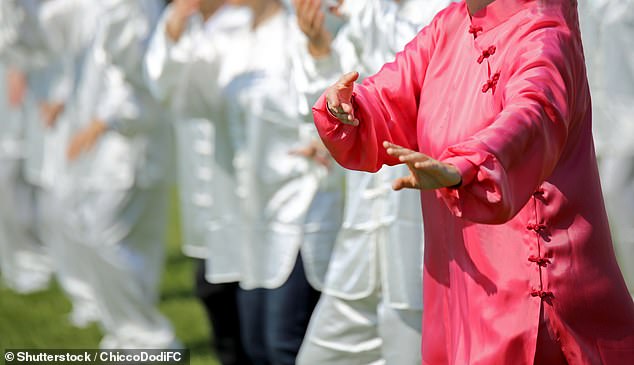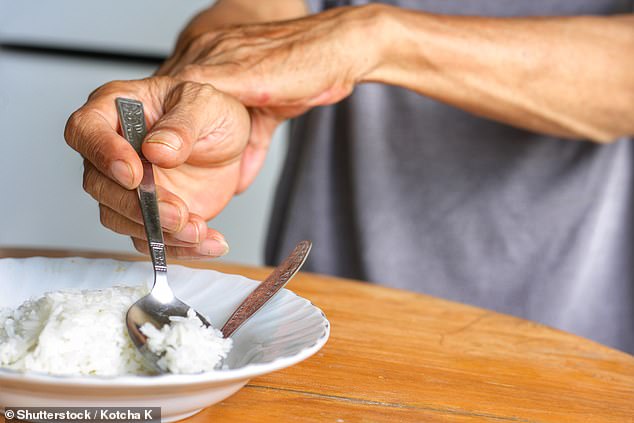Tai Chi can help to slow the symptoms of Parkinson’s disease for several years, study finds
Tai Chi can help delay the symptoms of Parkinson’s disease for years, a new study shows.
The traditional Chinese martial art, which involves series of slow, controlled movements, has been found to curb the progression of the debilitating condition.
Parkinson’s patients who used Tai Chi also required lower doses of the required medications, according to the findings published by the BMJ Journal of Neurology Neurosurgery and Psychiatry.
The disease is characterized by slowness of movement, tremor at rest, plus stiff and inflexible muscles.
It is the fastest growing neurological disorder in the world; the number of people affected is expected to reach almost five million in China alone by 2030.

Tai Chi (stock photo) can help delay the symptoms of Parkinson’s disease for years, a new study shows

According to the charity Parkinson’s UK, two people are diagnosed with Parkinson’s disease every hour in Britain (pictured).
According to the charity Parkinson’s UK, two people are diagnosed with the disease every hour in Britain.
There is no cure, and while medications can improve symptoms, they do not treat all symptoms of the disease.
And doctors say there’s no evidence they slow progression, either.
Previously published research shows that Tai Chi relieves the symptoms of Parkinson’s in the short term.
But it was not known whether this improvement could be sustained in the long term.
To find out, Chinese researchers followed two groups of Parkinson’s patients for more than five years, from January 2016 to June 2021.
A group of 147 patients practiced Tai Chi twice a week for an hour, helped by the provision of classes to improve their technique.
The other group of 187 patients continued their standard care but did not practice Tai Chi.
Disease severity was formally assessed in all participants at the start of the monitoring period, and disease progression, including increases in medication requirements, was subsequently monitored in November 2019, October 2020 and June 2021.
The degree of movement and other symptoms – such as autonomic nervous system function, mood, sleep quality and cognition – and the prevalence of complications, such as involuntary movements, hallucinations and restless leg syndrome, were also monitored.
Study author Dr Gen Li said: ‘Disease progression was slower at all measures in the Tai Chi group, as assessed using three validated scales to assess overall symptoms, movement and balance.
‘The number of patients who had to increase their medication in the comparison group was also significantly higher than in the Tai Chi Group: 83.5 percent in 2019 and just over 96 percent in 2020 compared to 71 percent and 87.5 percent respectively.
‘Cognitive function deteriorated more slowly in the Tai Chi group, as did other non-exercise symptoms, while sleep and quality of life continued to improve.
‘And the prevalence of complications was significantly lower in the Tai Chi group than in the comparison group.’
Dr. Li said falls, dizziness and back pain were the three side effects reported by study participants, but they were all “significantly lower” in the Tai Chi group.
While 23 people suffered a fracture, these all occurred during everyday life and there were fewer in the Tai Chi group.
Dr. Li, from Shanghai Jiao Tong University School of Medicine, added: ‘Our research has shown that Tai Chi maintains a beneficial effect on Parkinson’s disease in the long term, indicating its potential disease-modifying effects on both motor and non-motor -motor symptoms. , especially gait, balance, autonomic symptoms and cognition
‘Parkinson’s disease can progressively worsen motor function and non-motor symptoms over time, resulting in disability and affecting quality of life.
‘The long-term beneficial effect could extend time without disability, leading to higher quality of life, lower burden on caregivers and less drug use.’
